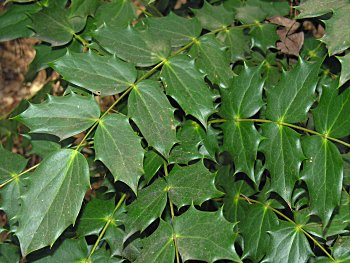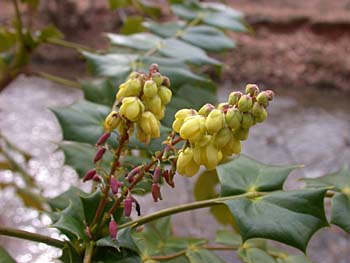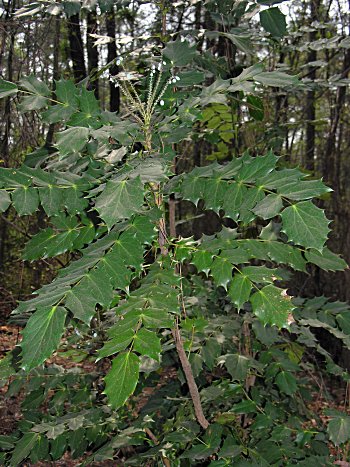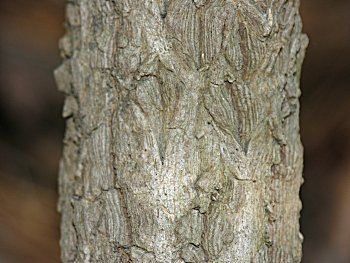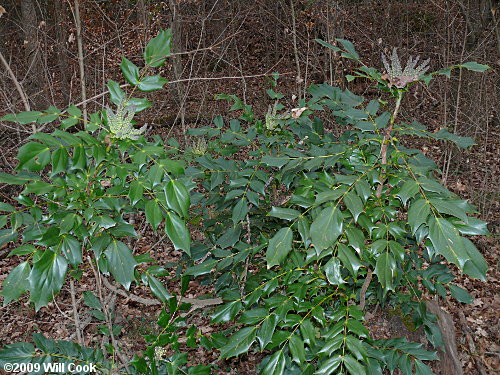
This frequently planted ornamental small shrub from China is invasive and currently an uncommon component of understory forests in North Carolina. It is particularly common in bottomland forests. The thick evergreen leaves and growth habit make the plant easy to recognize.
Eno River, Orange Co., NC 1/11/09.
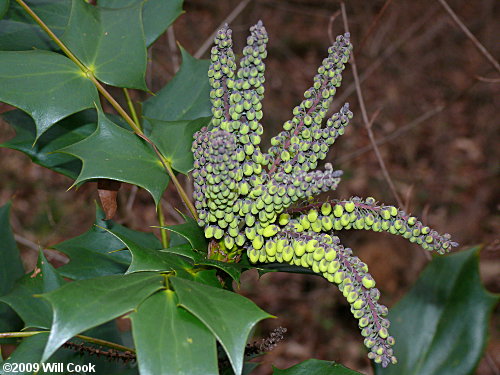
Flowers are produced in winter, appearing as early as mid-January and continuing through early March.
Orange Co., NC 1/11/09.
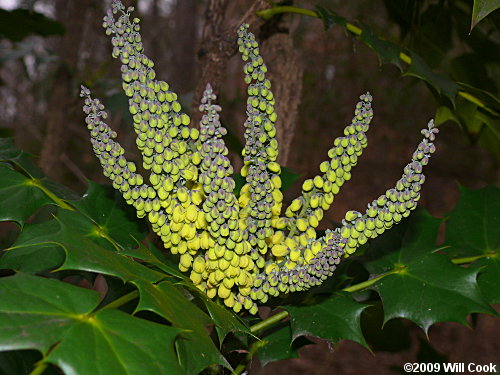
The sweetly fragrant yellow flowers are followed by blue berries, which are quickly gobbled up and spread by birds.
Orange Co., NC 1/11/09.
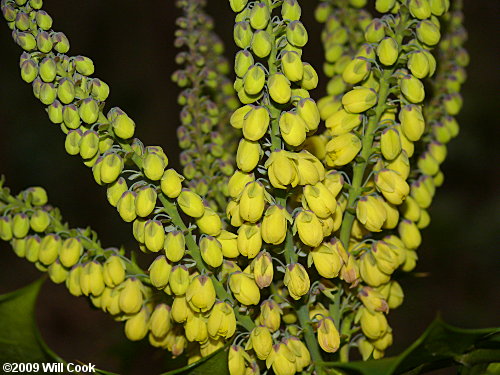
Orange Co., NC 1/11/09.
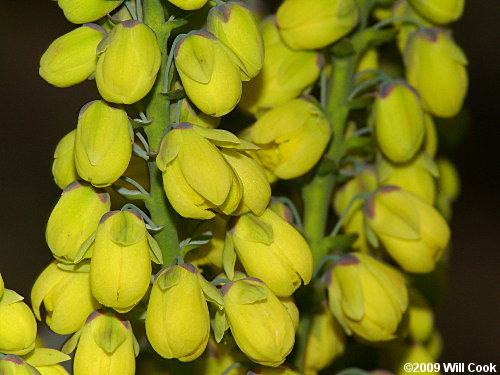
Orange Co., NC 1/11/09.
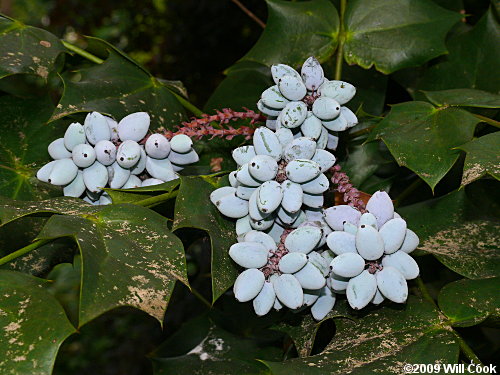
The fruits are bluish and glaucous, covered with a white waxy coating.
Chapel Hill, NC 5/9/09.
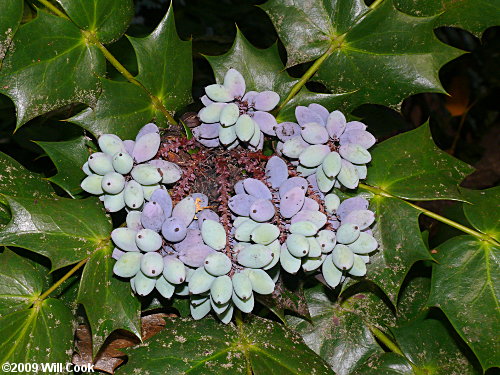
Chapel Hill, NC 5/9/09.
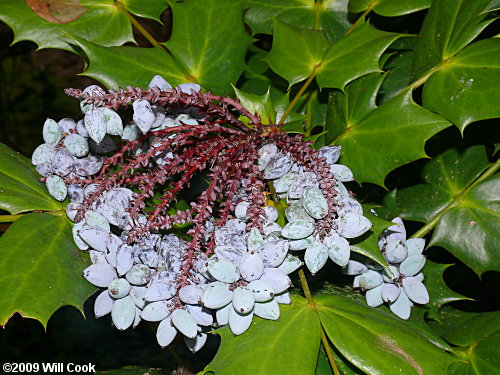
Chapel Hill, NC 5/9/09.
